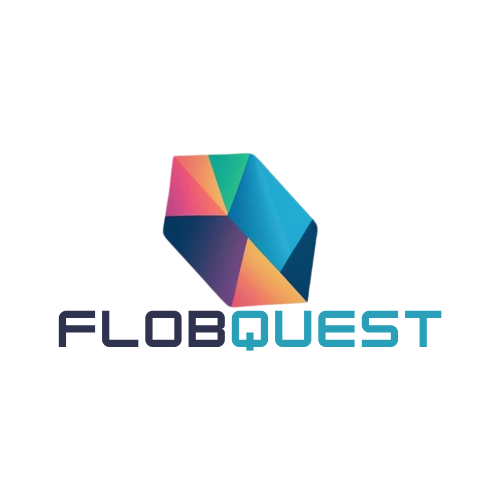Anzeigen
leadership skills 2025 set the search intent and frame a clear, timely focus for your development.
Are you ready to rethink how you lead in an era of rapid AI adoption and hybrid work models?
Many leaders in business are asking the same question. You face faster market shifts and new performance expectations. That changes your role day to day. It also affects long-term success and team outcomes.
This article uses a listicle format to distill research-backed insights into practical actions. Each item shows what to prioritize, from AI fluency and adaptability to communication, strategy, innovation, relationships, and decision-making.
Expect data-informed guidance, not guarantees. The ideas here are educational and adaptable to your context. Use them to ask smarter questions, try small experiments, and shape better conversations.
Anzeigen
Bookmark this guide and share it with peers who want clear, practical insights you can test at work.
Introduction: Why leadership skills 2025 will redefine your role
Fast-moving tech and flexible work norms are changing what people expect from managers and team leads. Survey data shows AI integration, hybrid models, and uncertainty are the key forces shaping the workplace today.
The context: AI, hybrid work, and constant change
AI and new tools accelerate decisions. At the same time, teams split time between offices and remote locations. These shifts raise fresh challenges for how you set direction and support people.
Anzeigen
What leaders must balance: tech, trust, and performance
You must adopt useful technology while keeping human connection strong. Aligning distributed teams and meeting expectations for flexibility are now core tasks. Clear communication reduces friction during change.
How this list helps: practical skills with current data
This guide offers short, practical actions you can test safely in your context. It focuses on behaviors you can influence, not universal fixes or guarantees.
“Simple experiments, steady feedback, and peer learning move teams forward more reliably than one-size solutions.”
- Compare your current practices with these insights.
- Select one or two areas to improve first.
- Learn with peers and mentors to speed progress.
AI fluency and tech-enabled decision-making
Start by treating AI as a tool for clearer, faster decisions rather than an abstract trend. Map a few routine choices where better data or automation could change the outcome.
Most global CEOs (71%) and senior executives (78%) expect AI to raise their value soon. Teams that score higher on tech transformation see faster revenue growth (8.7% vs. 3.2%). These trends normalize safe experiments at scale.
From awareness to application
Simple path: inventory use cases, run a low-risk pilot, set decision thresholds, and measure decision-quality improvements. Define stop/continue rules so learning compounds without large exposure.
Practical steps and governance
- Run hands-on workshops where leaders practice prompts and compare outputs.
- Create a lightweight checklist to review bias, data sources, and human-in-the-loop steps.
- Establish monthly webinars and short courses as learning rituals to sustain progress.
Beispiel: a half-day workshop compares three tools, scores outputs against a business question, and produces a one-page safe-use standard to pilot back with a team.
Adaptability and change leadership in a volatile environment
You now face an environment where small shocks cascade quickly, so practical adaptability becomes your daily advantage. Digital disruption, geopolitical risk, and supply volatility shift priorities and make long plans brittle.
Why agility matters now: digital disruption and geopolitics
Adaptability connects big trends to routine work. When software updates, trade rules, or climate events hit, decisions must be faster and clearer.
That means your management must shorten feedback loops and put simple rules in place to reduce ambiguity.
Change playbook: clear goals, timelines, and accountability
Use a three-step playbook: set a single clear goal, assign one owner, and define a 6–8 week timeline with checkpoints.
- Week 0: clarify outcome and risks.
- Weeks 1–4: run quick experiments and log decisions.
- Weeks 5–8: review, adjust, and decide start/stop/continue.
Modeling learning: staying current without overwhelm
Protect short learning sprints on your calendar and share concise summaries with the team. Do weekly check-ins, a monthly risk scan, and a quarterly retro.
Tipp: hold listening sessions for resistance, state trade-offs openly, and celebrate small wins to sustain momentum.
“Adaptability is a practiced muscle — model curiosity, protect time for learning, and make change visible.”
Coordinate with finance, HR, and operations so changes align across functions. Use a simple decision log to make adjustments early, not late.
Communication and trust across hybrid and remote teams
When people are spread across places, clear routines matter more than long meetings. Strong, consistent communication helps your team feel anchored and reduces friction in a mixed work environment.
What employees want: flexibility trends you can’t ignore
Flexible hours rank as a top priority for 80% of employees. Only 19% of full-time office workers want to stay on-site; most prefer hybrid or fully remote options.
What to do: use a short survey to map preferences, then publish a simple policy that balances business needs and individual choice.
Trust-building rituals: clarity, cadence, and visibility
Build trust by making expectations visible. Publish meeting cadences, clarify decision rights, and share priorities and blockers regularly.
- Cadence: weekly check-ins + monthly project syncs.
- Visibility: a shared board for priorities and blockers.
- Decision rights: one owner per deliverable.
Tool mastery: collaboration platforms that enhance outcomes
Define a few simple norms: naming conventions, response-time windows, and meeting-light days. These rules cut noise and speed action.
Use asynchronous updates and short video walkthroughs so distributed teams stay aligned without meeting overload.
Real move: remote management training that sticks
Train managers in remote coaching, outcome-based feedback, and inclusive facilitation for mixed formats. Measure engagement by participation, throughput, and pulse checks — not attendance.
“Consistent communication beats volume; managers who listen well earn durable engagement.”
Quick plan: run a one-day training, set tool norms, schedule quarterly policy reviews, and run short virtual team-building sessions to keep connection strong.
Strategic vision and planning for uncertain markets
When markets shift quickly, your job is to translate signals into short, practical bets. Scan macro and product trends, then list a few clear opportunities and risks that inform near-term goals.

Seeing around corners: aligning priorities with trends
Use a compact trend scan to spot where the market moves. Turn each signal into one line: opportunity, risk, and a linked decision to learn more.
Translating vision into roadmaps and metrics
Build a simple strategy stack: a north‑star outcome, the choices that follow, and 3 initiatives that matter now. Assign owners and two to three metrics that measure performance Und growth.
- Define assumptions to test and set checkpoints to revisit choices.
- Create a one‑page roadmap per Team that links work to outcomes and highlights dependencies.
- Note where technology or AI could enable efficiency, with guardrails applied.
Leaders must name success signals and failure triggers up front. Socialize the plan in plain language and visuals. Run quarterly reviews, invite rising people to co‑create, and keep focus, clarity, and adaptability at the center of execution.
“Clear priorities plus testable assumptions make it easy to pivot without blame.”
Innovation and a customer-centric mindset
Turning customer signals into action starts with tiny, time‑boxed tests anyone can run.
Make experimentation ordinary. Define small experiments that teams can run with real customers, and set clear success criteria. Time-box each test, keep budgets modest, and use staged approvals so you learn fast without heavy risk.
Embedding experimentation beyond R&D
Ask frontline employees to surface ideas weekly. Run short pilots led by product, sales, and service together.
- Use a simple artifact set: a hypothesis, a test plan, and a short readout.
- Hold cross-functional jams to co-create practical solutions that improve customer outcomes.
- Measure customer impact and operational feasibility before scaling.
Data-informed creativity: connecting insights to action
Set a standing customer insight review where teams share data, stories, and patterns.
Turn each insight into a rapid pilot with a clear decision: scale, pivot, or stop. Publish a plain-language AI or analytics strategy so every employee knows why and how tools will be used.
“Small experiments plus clear readouts make opportunities visible and repeatable.”
Leaders model curiosity by celebrating learnings, not just wins. This creates a safe environment where the whole team can turn trends and insights into real business solutions.
Relationship building and employee motivation
How you invest time in people determines morale and measurable performance. Strong relationships drive real business outcomes: Gallup found highly engaged units have 41% fewer quality defects, 37% less absenteeism, and 21% higher productivity.
Motivation without gimmicks comes from simple, repeatable habits you keep over weeks and months. Try these rituals:
- Weekly appreciation notes that are specific and timely.
- Strengths-based assignments that match work to growth interests.
- Regular 1:1s focused on goals, constraints, and next steps.
Data backs this up. An Interact study showed 63% of U.S. employees cite lack of appreciation as a top complaint; appreciation raises engagement by about 60%. Westminster College reports boosting morale is the top motivator for 32% of employees.
Watch early signs of burnout and adjust workloads early. Use simple team practices to build trust: transparent commitments, shared norms, and an open problem list everyone can see.
Measure and sustain with quick pulse checks, stay interviews, and participation trends. Use a short career conversation model: strengths, stretch opportunity, and two concrete next steps. Over time, consistent behavior — not perks — creates resilient teams that do better work and stick together.
“People respond to being seen and supported; steady habits beat one-off gestures.”
Decision-making, critical thinking, negotiation, and conflict management
When choices pile up, a short decision loop brings clarity and momentum. Teach your team FrED: Frame the problem, Explore options, and Decide with clear review points. This repeats as new data appears.
Framing complex problems: a simple loop you can teach
Start by separating symptoms from root causes. Clarify the specific goals you need to reach. Use a two-column comparison to weigh trade-offs and constraints.
Negotiation as alignment: interests, options, and win-win
Follow a six-stage flow: Preparation, Discussion, Clarify goals, Negotiate toward win-win, Agreement, Implementation. Seek interests behind positions and generate multiple options before choosing a path.
Resolving friction early: skills that reduce costly conflicts
Managers spend a lot of time on conflict, yet many lack training. Teach simple steps: name the issue, state impacts, set ground rules, and agree next steps. Use listening prompts and reframing techniques to lower heat.
- Dokumentieren decisions, assumptions, and review dates to build institutional memory.
- Practice these methods in low-stakes work so you build confidence before high-impact moments.
- Ermutigen diverse input — respectful debate yields stronger solutions.
“Decisions improve when teams make trade-offs visible and agree how they’ll revisit choices.”
leadership skills 2025: Putting it all together
Begin with a simple check: where do your current habits help—and where do they slow progress?
Assess, prioritize, and sequence your development
Quick self-assessment: rate yourself on AI fluency, adaptability, communication, strategy, innovation, relationships, and decision-making.
Pick one or two focus areas. Sequence daily habits and short learning tasks over 60–90 days to avoid overload.
- Week 0: baseline score and one small business initiative to practice on.
- Weeks 1–6: micro-habits, short courses, and on-the-job experiments.
- Weeks 7–12: feedback loops, adjust, and measure impact.
Build support: mentors, peer groups, and targeted programs
Form a peer guild inside your team to swap templates, coach each other, and keep commitments visible.
Managers and mentors can help via shadowing, artifact feedback, and safe practice reps.
Use a mix of webinars, workshops, and short online courses to fit your schedule. Set clear intentions and define what evidence of growth looks like before you start.
- Checkpoints: weekly reflection, monthly stakeholder feedback, quarterly reviews.
- Track habits, outcomes, and lessons in a lightweight log.
- Run a short retrospective and plan the next cycle.
Ask for help early—from mentors, coaches, or specialists—so growth stays steady and supported.
Abschluss
Make progress visible: commit to one change and invite feedback from a teammate this week. Pick one opportunity to apply an insight, and choose one relationship to strengthen for trust.
Focus your efforts on strategic vision, clear communication, and practical change management. When managers translate trends into simple goals, teams and companies see better alignment and faster growth.
Tie development to real work, protect time for practice and reflection, and pause anything that creates risk or misalignment. Adapt recommendations to your environment and keep experiments small.
If you need help, seek a mentor, coach, or specialist for areas like AI, communication, or change. Listen to employees, set clear expectations, and follow through — steady learning loops beat one-off fixes.
Thanks for investing time in your development. Share these insights with your team and keep focusing on people, clarity, and experimentation to unlock future success.



